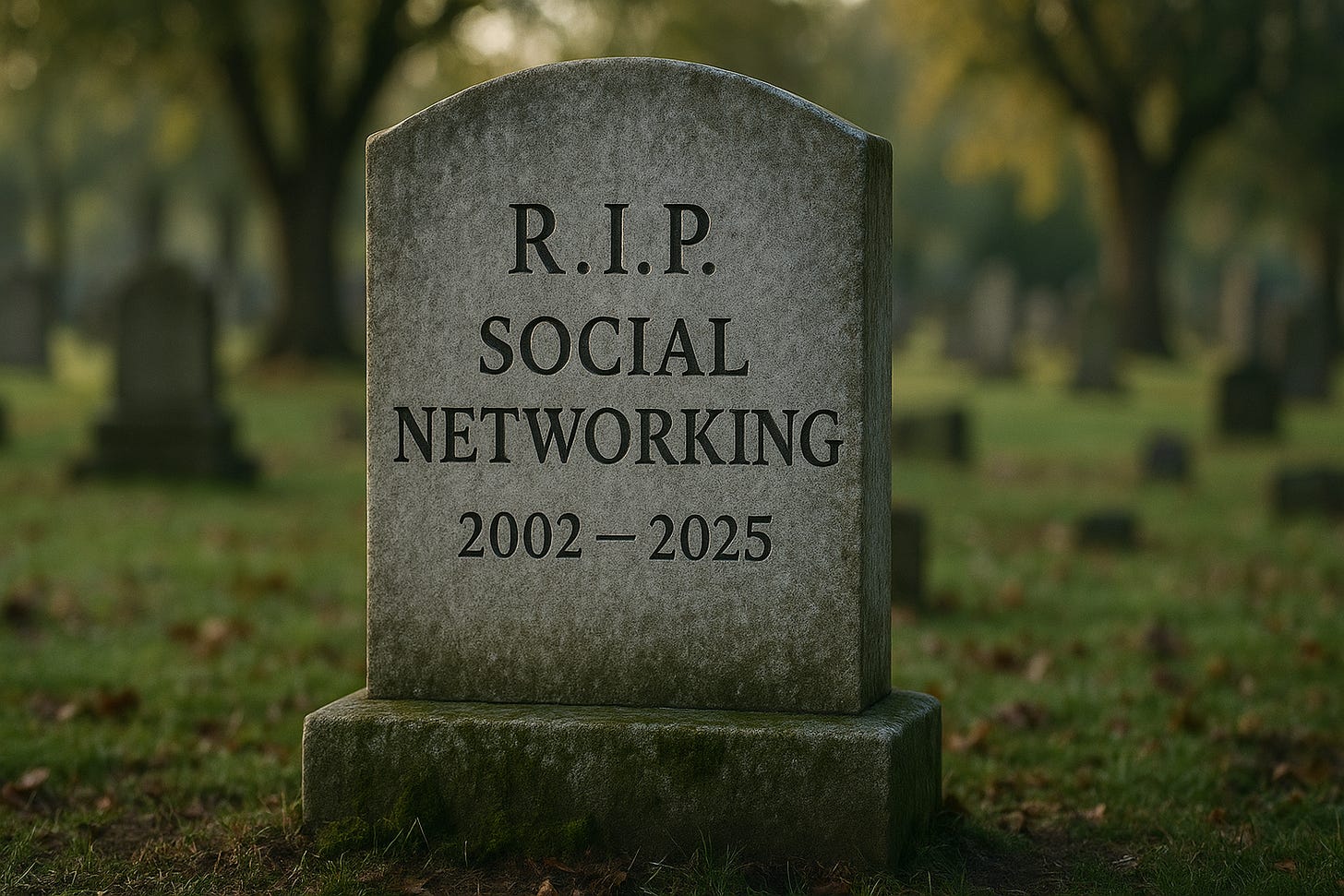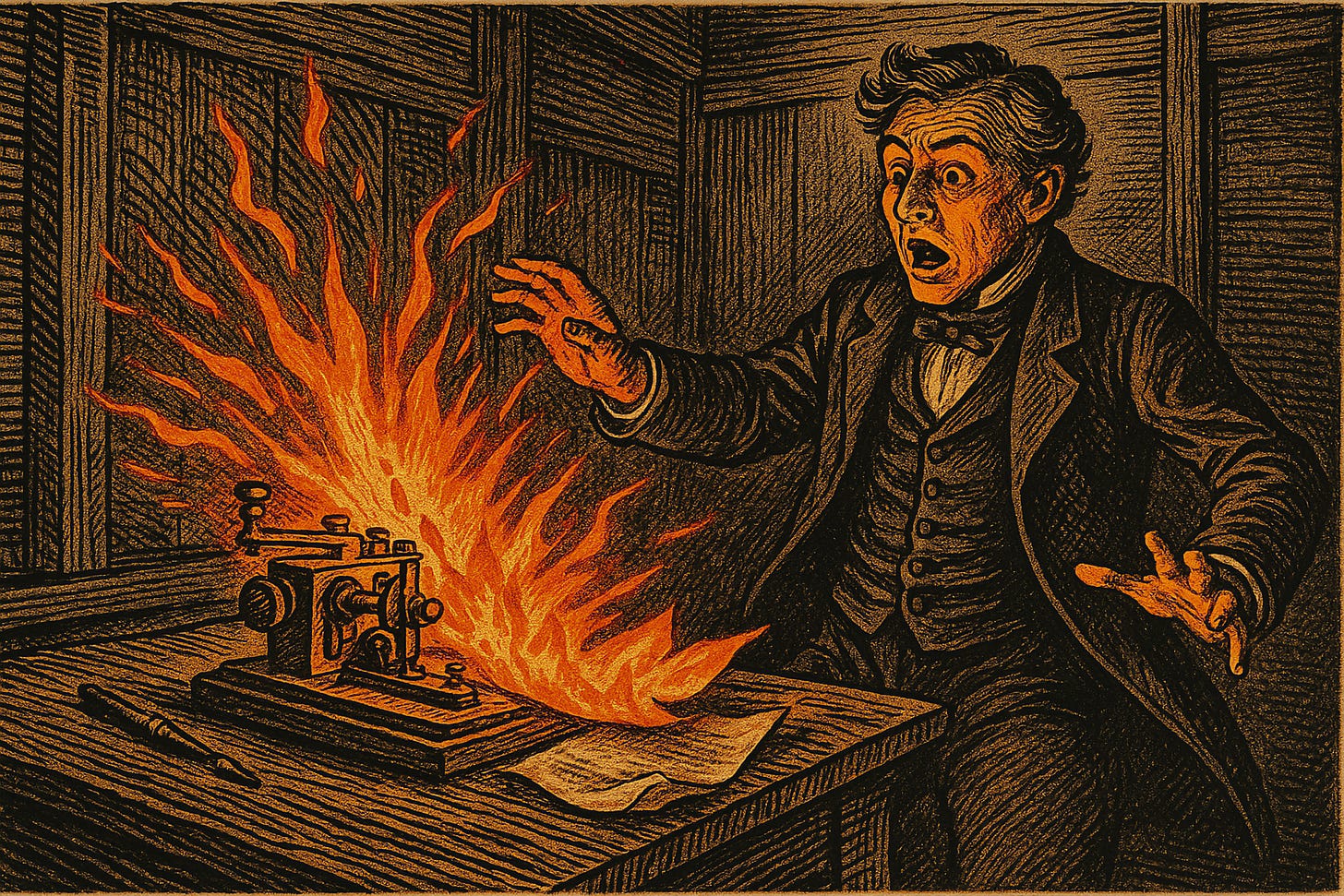583: R.I.P. Social Networking, Will the Real GPT-5 Stand Up?, Intel + US Gov't, Andy Jassy's Amazon, A.I. Brain Damage, Dylan Patel, Gemini, Sonnet 1M, Geomagnetic Storms, and Guitar-Piano
"Welcome to the Content Roulette Era"
A desk is a dangerous place from which to watch the world.
—John le Carré
☀️🧲⚡🔥🌎 😬 In 1859, telegraph operators around the world reported that their equipment was spontaneously sparking and even catching fire 🔥, and continuing to send messages even after being disconnected from their power sources. 🔌🔋
Some received electric shocks. ⚡
This was the Carrington Event, the most powerful geomagnetic storm in recorded history.
It peaked on September 1-2, 1859, during solar cycle 10 (the 10th solar cycle since 1755, when recording of solar sunspot activity began).
A massive solar flare had sent a coronal mass ejection toward Earth, and when it hit our magnetosphere, it induced electrical currents in any long metal conductor, essentially turning them into generators (aka telegraph wires at the time).
The geo-storm was so strong that it woke gold miners ⛏️:
Auroras were seen around the world in the northern and southern hemispheres. The aurora borealis over the Rocky Mountains in the United States was so bright that the glow woke gold miners, who were reported to have begun to prepare breakfast because they thought it was morning.“Northern” lights appeared as far south as the Caribbean! 🏝️
1859 had very little technology to be disrupted by such a solar storm… but what if it happened today? 🤔
Yikes!
A kind of giant EMP blast, but over the whole planet 🧲🌏
It could damage much of the planet’s electrical grids and destroy countless satellites. A 2013 study estimated: “the economic impact in the U.S. alone could exceed $2 trillion, with recovery taking 4-10 years.”
A lot of expensive infrastructure has been built since 2013 (think datacenters), so the damage today would be much higher.
It’s not just theoretical. We came *this close* 🤏 in July 2012 🌞
A solar storm of similar magnitude missed Earth by just nine days. In other words, if it had happened a bit earlier, it would have been a direct hit on Earth… 😨
In February 2014, physicist Pete Riley published a paper in Space Weather (yes, it’s a real thing) calculating that there's a 12% chance of a Carrington-class storm hitting Earth in the next decade.
We dodged that bullet, but the sun hasn't gone anywhere, and the underlying risk remains.
🎧📲🗣️💬 I knew the Substack app had a text-to-speech feature, but I hadn’t used it in a while. My friend MBI (🇧🇩🇺🇸) recently told me that he uses it to listen to my stuff while getting his daily 10k steps, and it made me curious to try it again.
I was impressed!
They must’ve updated the audio engine since I last tried it, because the voice now sounds more natural. It’s even smart enough to expand certain acronyms and abbreviations into full words (for example, it read “h/t” out loud as “hat tip”, which really surprised me 🎩).
Now I want to listen to more Substacks while walking or doing chores.
If you feel like you don’t have time to read everything, give it a try! Just hit the ▶️ button in the top right of the app. You can even adjust playback speed (I like 1.75-2x).
🏦 💰 Business & Investing 💳 💴

🪦 R.I.P. Social Networking (2002 — 2025) 👥🤳
Ben Thompson (💚 🥃 🎩) points out a Meta filing that states:
Today, only a fraction of time spent on Meta’s services – 7% on Instagram, 17% on Facebook – involves consuming content from online “friends” (“friend sharing”).
What replaced it?
A majority of time spent on both apps is watching videos, increasingly short-form videos that are “unconnected” – i.e., not from a friend or followed account – and recommended by AI-powered algorithms Meta developed as a direct competitive response to TikTok’s rise, which stalled Meta’s growth.
Mark Zuckerberg once talked constantly about his mission to help “connect people” and create “meaningful connections”, etc.
Most of that old-fashioned human connection has shifted to instant messaging and group chats (which Meta also largely powers, to be fair, but doesn’t monetize much).
What used to be social has become content roulette 🎰
Meta probably deserves more credit than it gets for turning a very large ship around to counter the TikTok threat, which was a much bigger challenge than Snapchat, which they countered and neutralized by cut & pasting the ephemeral ‘Stories’ format.
But I wonder: Was this always the evolutionary path of social networks? To end up not very social at all?
Was there a fork in the road, a choice, or were things always going to end up here, considering what was being optimized for (endless scrolling aka “engagement”)?
Looking at YouTube’s trajectory (📺), I suspect there’s path dependency that was going to lead there anyway. TikTok just found the format first, thanks to China’s unique internet dynamics, and accelerated the change.
But it’s hard to know for sure.
Welcome to the Content Roulette Era (2020 — ???)
🙋🤖🙋 Will the Real GPT-5 Stand Up? 🙋🤖🙋
As expected, there’s been drama since GPT-5 came out.




